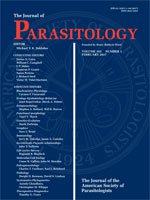Fertilization through hypodermic implantation of spermatophores has been recorded in at least 4 groups of leeches: Glossiphoniidae, Piscicolidae, Ozobranchidae, and Erpobdelliformes. In Piscicola respirans (Piscicolidae), vector tissue responsible for sperm transfer from a specialized region of the body to the ovaries has led to the non-random attachment of spermatophores on the body surface of the recipient leech. It has been suggested that in glossiphoniid leeches, spermatophores are implanted in any part of the body surface of the recipient leech without a clear pattern or preference for region. In order to determine if the donor leech implants its spermatophores in a specific area of the conspecific recipient's body, we surveyed 81 specimens of Haementeria officinalis (Clitellata: Glossiphoniidae) from a wild population in Guanajuato, Mexico, and recorded the distribution of the spermatophores over the recipient's body surface. We describe for the first time a spermatophore of H. officinalis using scanning electron and light microscopy. Spermatophores were found attached dorsally between somites XVII and XXI 59.57% of the time, and the rest were found in other parts of the body, including on the ventral surface. The non-specific attachment for spermatophores does not support the presence of specialized tissue responsible for sperm transfer and instead attributes the placement of implantation to mechanical characteristics of the copulation process.
How to translate text using browser tools
1 February 2017
Prevalence, Abundance, and Intensity of Implanted Spermatophores in the Leech Haementeria officinalis (Glossiphoniidae: Hirudinida) from Guanajuato, Mexico
Ricardo Salas-Montiel,
Anna J. Phillips,
Samantha Contreras-Mirón,
Alejandro Oceguera-Figueroa
ACCESS THE FULL ARTICLE

Journal of Parasitology
Vol. 103 • No. 1
February 2017
Vol. 103 • No. 1
February 2017




